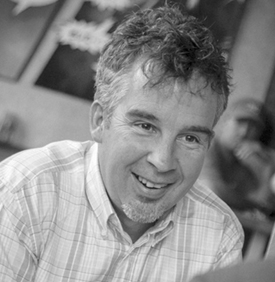
July 1st, 2020
Leading in Complexity
Leadership is much more about collective influence than it is about power and control.
Paul Plsek (2001) uses the metaphor of perceiving our employees, colleagues and clients as bricks or birds. Imagine that we are holding both a brick and a bird. If we were to throw the brick towards a target we could generally predict where the brick would land and we could also repeat the action without difficulty. However, if we were to throw a bird towards a target, how likely is it that the bird would reach the target? Sure, we could always clip the bird’s wings, or wrap it in ‘red tape’ (or worse) and thus gain accuracy and predictability, but what would be lost in terms of innovation, adaptability and life itself? We could perhaps also encourage the bird towards the target with food or other incentives, but we could certainly never guarantee that it would get there. In short, the brick approach brings predictability, repeatability, and perhaps efficiency, whereas the bird perspective promotes diversity, responsiveness to change, adaptation and innovation.
Humans don’t like being treated as bricks – to be stacked, layered, aligned or told what to do. Human’s love self-determination, freedom to create and express themselves in areas they are passionate about.
Leadership Lab advocates an approach to leadership based on a concept called ‘complexity thinking’ in which humans in communities and organisations self-organise around common threats and opportunities. The leader’s role is to create an environment where the ‘birds’ will self-organise in emergent ways. This involves not aligning or controlling, but instead fostering the conditions within which this is highly likely to happen, namely;
1) Identifying a compelling purpose or attractor,
2) Prioritising whakawhanaungatanga to create high trust relationships,
3) Fostering interaction and shared learning through dialogue and
4) Distributing power and decentralise control so all can lead.
Collectively leaders have the vision, will and resources to co-create new approaches to address these most complex and challenging issues. Leadership Lab’s purpose is to grow this collective leadership to allow the emergence of flourishing organisations and communities. If you are interested in reading more about this approach can we suggest the following article that Pete Cammock and I wrote a few years ago as a place to start.
Read more: Leadership for Emergence: Exploring organisations through a living system lens
Chris Jansen, Co-Director Leadership Lab

July 1st, 2020
Leading in Complexity
Leadership is much more about collective influence than it is about power and control.
Paul Plsek (2001) uses the metaphor of perceiving our employees, colleagues and clients as bricks or birds. Imagine that we are holding both a brick and a bird. If we were to throw the brick towards a target we could generally predict where the brick would land and we could also repeat the action without difficulty. However, if we were to throw a bird towards a target, how likely is it that the bird would reach the target? Sure, we could always clip the bird’s wings, or wrap it in ‘red tape’ (or worse) and thus gain accuracy and predictability, but what would be lost in terms of innovation, adaptability and life itself? We could perhaps also encourage the bird towards the target with food or other incentives, but we could certainly never guarantee that it would get there. In short, the brick approach brings predictability, repeatability, and perhaps efficiency, whereas the bird perspective promotes diversity, responsiveness to change, adaptation and innovation.
Humans don’t like being treated as bricks – to be stacked, layered, aligned or told what to do. Human’s love self-determination, freedom to create and express themselves in areas they are passionate about.
Leadership Lab advocates an approach to leadership based on a concept called ‘complexity thinking’ in which humans in communities and organisations self-organise around common threats and opportunities. The leader’s role is to create an environment where the ‘birds’ will self-organise in emergent ways. This involves not aligning or controlling, but instead fostering the conditions within which this is highly likely to happen, namely;
1) Identifying a compelling purpose or attractor,
2) Prioritising whakawhanaungatanga to create high trust relationships,
3) Fostering interaction and shared learning through dialogue and
4) Distributing power and decentralise control so all can lead.
Collectively leaders have the vision, will and resources to co-create new approaches to address these most complex and challenging issues. Leadership Lab’s purpose is to grow this collective leadership to allow the emergence of flourishing organisations and communities. If you are interested in reading more about this approach can we suggest the following article that Pete Cammock and I wrote a few years ago as a place to start.
Read more: Leadership for Emergence: Exploring organisations through a living system lens
Chris Jansen, Co-Director Leadership Lab


